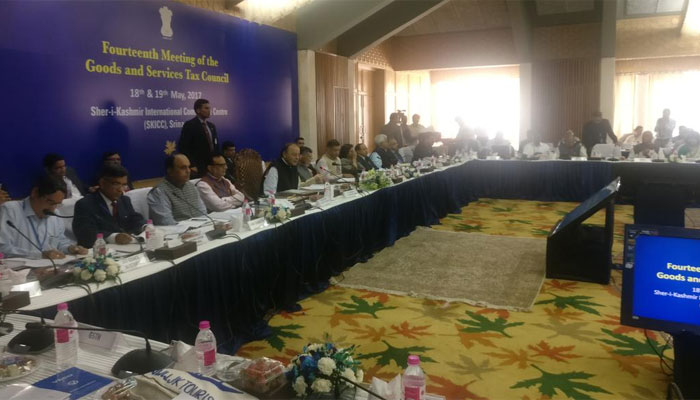Dal, Foodgrain, Daily Consumer Goods To Be Cheaper after GST: Government
 NEW DELHI : The GST Council on Thursday finalised tax rates of goods and services under the four-slab structure with essential items of daily use being kept in the lowest bracket of 5 percent. The Council, headed by Union Finance Minister Arun Jaitley and comprising representatives of all states, in the opening session of the two-day meeting also approved rules for the Goods and Services Tax (GST) regime that is scheduled to kick in from July 1.
NEW DELHI : The GST Council on Thursday finalised tax rates of goods and services under the four-slab structure with essential items of daily use being kept in the lowest bracket of 5 percent. The Council, headed by Union Finance Minister Arun Jaitley and comprising representatives of all states, in the opening session of the two-day meeting also approved rules for the Goods and Services Tax (GST) regime that is scheduled to kick in from July 1.
The Council fixed the rates for over 1200 items under the Goods and Services tax, amid demand by some states to keep essential items under the lower tax category.”Out of 1,211 items, GST rates on all except six categories have been decided,” Finance Minister Arun Jaitley told reporters after a meeting in Srinagar, the capital of Jammu and Kashmir.
Under the new tax regime, rates will range from 5 to 28 percent, with 12 percent and 18 percent being the standard rates.Only 19 percent of goods will be taxed above 18 percent while 81 percent of items will fall under below 18 percent GST rate slabs.The GST is a destination-based single tax on the supply of goods and services from the manufacturer to the consumer and is one indirect tax for the entire country.
Consumer durables will also get a price cut after the implementation of GST. Due to multiplicity of taxes, items like air conditioners used to invite 32 per cent or more tax. Now they have been put in 28 per cent slab which means the sector which has been battling dipping sales figures can expect a shot in the arm.
Cereals and milk will be exempted from tax while sugar, tea, coffee and edible oil will be taxed at a rate of 5 percent. Coal will be taxed at 5 percent along with a levy of Rs 400 per tonne. Hair oil, soap, tooth paste will attract 18 percent GST. The panel will discuss tax rates for gold and some other items on Friday and could meet one more time if necessary to decide rates on remaining items.
The GST will be a national sales tax that will be levied on consumption of goods or use of services.It will replace 16 current levies — seven central taxes like excise duty and service tax and nine state taxes like VAT and entertainment tax — thereby creating India as one market with one tax rate.
GST to convert entire country into one market: Naveen Patnaik With the GST, India will join select league of nations with a goods and service tax. France was the first country to implement the GST in 1954.
Since then, Germany, Italy, the UK, South Korea, Japan, Canada and Australia have been among the over a dozen nations which have implemented the GST. China implemented GST in 1994 while Russia did it in 1991. Saudi Arabia plans to do it in 2018.
Last week, the Reserve Bank called the GST a “game changer” and said given the cross-country experience and empirical evidence on efficiency gains from the Value Added Tax (VAT) in the Indian context, the implementation of this comprehensive indirect tax is likely to ensure higher tax buoyancy and an improvement in government finances over the medium term.

